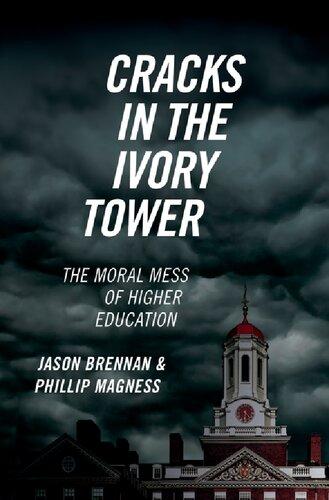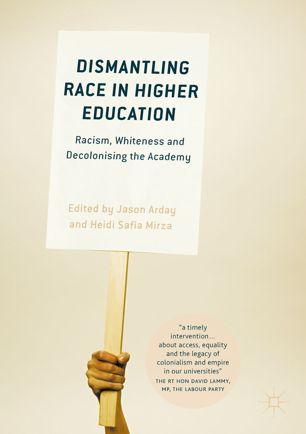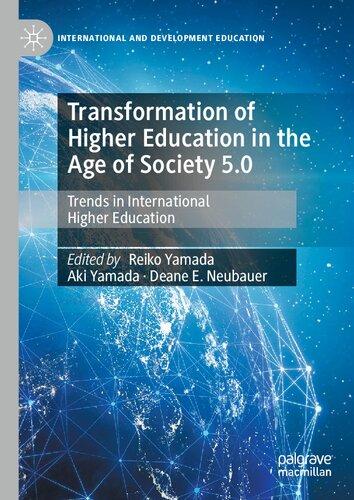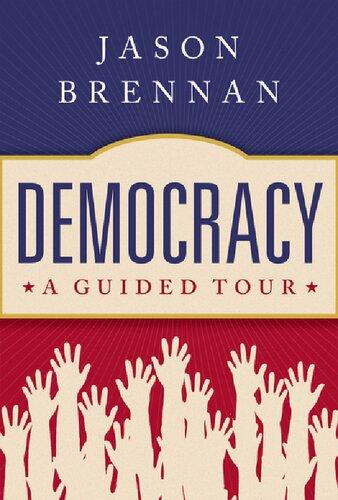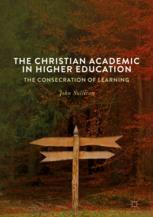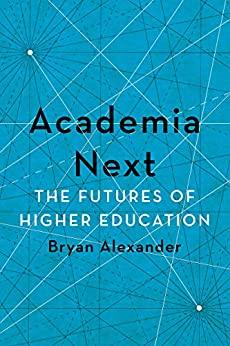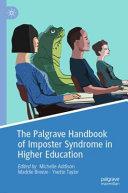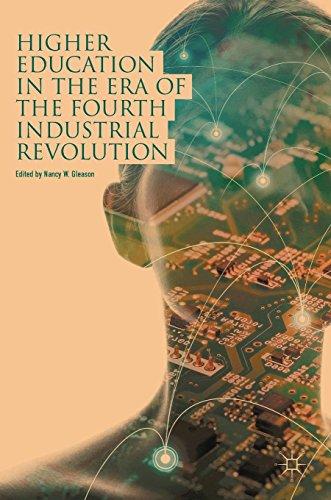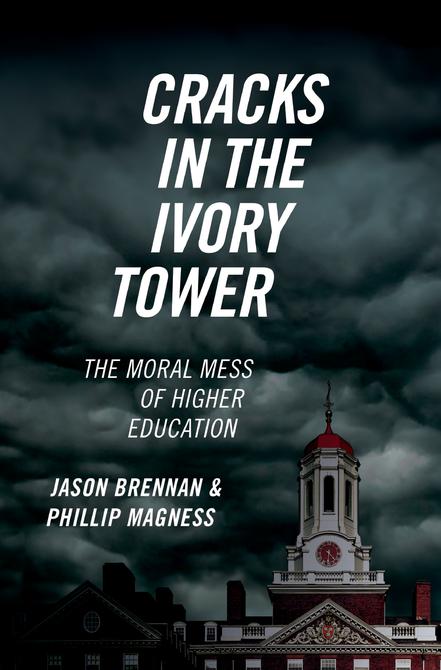CRACKS IN THE IVORY TOWER
Neither Gremlins nor Poltergeists
Gremlins, as you know, are horrid little beasts. At night, they creep around and sabotage your stuff. Is your dishwasher broken? Probably gremlins.
Poltergeists are even more insidious. Poltergeists are incorporeal spirits that possess your home. They smash the dishes, trash the furniture, and play white noise on your TV while you sleep. You can’t trap or kill a poltergeist, unlike a gremlin, because poltergeists lack physical bodies. Burn your house down and they’ll just move elsewhere.
Both gremlins and poltergeists are mythical saboteurs. But it’s not surprising that people invent such legends. As anyone who’s ever taught economics, sociology, or biology knows, most people have trouble understanding how an event could happen without someone or something making it happen.
Witness how ancient peoples tended to believe a god or spirit haunted every tree, bush, and river. Witness how contemporary people stand over their ruined homes and wonder why God decided to send a flood their way. Witness how when an election goes badly, partisans blame hackers. When the stock market plummets, people blame Wall Street. If their football team loses, they think someone tampered with the balls or the field.
People have a hard enough time understanding how natural events could result from natural laws, rather than supernatural will. They have an even harder time comprehending how many things that happen in society could be the product of human action but not human design.
When people observe social trends—inequality rises or falls, people get richer or poorer, mores about sex become stricter or looser—they jump to the conclusion that some powerful person or group chose to create the change.
You see this trend most especially in politics. What caused the Big Bad Thing? Blame George Soros, or Charles Koch, or the Russian hackers, or the Rothschilds, or the. . . . Really, these are just newfangled, slightly more respectable versions of gremlins and poltergeists. You can make a lot of money selling such conspiracy theories.
What economists and political scientists have discovered, but most people don’t know, is that social trends and systematic behaviors rarely result from puppet masters pulling strings. We explain systematic behavior not by suggesting bad character or malicious intent, but instead by examining the incentives and constraints that individuals face. When people are rewarded for doing something, they will do more of it. When they are punished, they will do less. If lots of people do something bad, it’s probably because the incentives induce them to do it.
In turn, we can explain the incentives people face by examining the institutions under which they live. As the Nobel laureate and economist Douglass North puts it, institutions are “the rules of the game in a society or, more formally, are the humanly devised constraints that shape human interaction.”1 Furthermore, the rules we live under often appear by accident, or emerge spontaneously from previous trends, or result because of external constraints. There is rarely some mastermind behind the curtain. Good and bad things happen, but not because anyone—or any gremlin or poltergeist—planned for them to happen.
In short: Big trends emerge from individual behavior without anyone running the show. Institutions create incentives, and incentives determine behavior. Econ 101.
Now, that’s a simple story, maybe too simple. Sometimes we need a fancier story. Sometimes we’ll even discover bona fide gremlins and poltergeists are to blame. But even the Ghostbusters would tell you not to start with the supernatural explanations. The bump in the night is probably just your furnace. You start with the simple, natural story first and then invoke evil monsters and spirits only after you rule out natural causes.
AgAinst gremlins And Poltergeists in HigHer educAtion
What does this have to do with higher education? Many people, on both the Left and Right, from parents to students to faculty to staff, from outsiders to insiders, believe that higher education in the US and elsewhere faces various crises and suffers from various flaws.
We agree! That’s what this whole book is about. Indeed, we’re here to say the situation is worse than you think.
But many people blame these flaws on gremlins or poltergeists. “Gremlins” are corporeal individuals who sabotage higher education for their own sinister ends.2 Such gremlins might include, say, state or federal legislatures, donors, various corporations, or the Reds. “Poltergeists” in this case refers to intellectual movements, ideas, ideologies, and attitudes that possess and corrupt academia. Some such supposed poltergeists include “neoliberalism” or “the profit orientation” or “the practical orientation” or “leftist ideology” or “social justice.”3
This book is titled Cracks in the Ivory Tower: The Moral Mess of Higher Education. We think higher education suffers from serious moral flaws. From a business ethics standpoint, the average university makes Enron look pretty good. Universities’ problems are deep and fundamental: Most academic marketing is semi-fraudulent, grading is largely nonsense, students don’t study or learn much, students cheat frequently, liberal arts education fails because it presumes a false theory of learning, professors and administrators waste students’ money and time in order to line their own pockets, everyone engages in self-righteous moral grandstanding to disguise their selfish cronyism, professors pump out unemployable graduate students into oversaturated academic job markets for self-serving reasons, and so on.
What sets this book apart from many other critiques of higher ed is that we believe academia’s problems are ingrained. Bad behaviors result from regular people reacting to bad incentives baked into academia. No specters haunt academia. Normal people just take the bait.
BAd incentives exPl Ain BAd BeHAvior
To illustrate, let’s list some examples of bad behavior we’ve witnessed firsthand. These cases are not so serious. In the rest of the book, we’ll
go on to discuss far worse scenarios. We chose the stories that follow because they’re simple, and the causes of the problems they illustrate are easy to see. We want to warm you up before we get to the more complicated stuff.
Breaking the Law, Breaking the Law
Years ago, Jason was involved in a tenure-track job search. The search committee picked three candidates (out of hundreds) for fly-out interviews. After the interviews, the department voted to hire a particular candidate, who happened to be a white male. Their second choice candidate was a white woman.
On paper, the man’s résumé was superior to the woman’s. Both candidates came from equally and highly ranked graduate programs, but the man had published more articles in better peer-reviewed outlets, and his experience showed a more original, higher-stakes research trajectory. The man had previously taught successful classes like those the hiring department offered; the woman had not. The man had received competing offers, but indicated he was likely to accept an offer from the university in question; the woman had indicated she was likely to turn down any offer from the university in question because she was unsure about the fit.
The department asked to hire the male candidate. The provost—let’s call him Jeff—said no. He claimed that the female candidate was superior and they should hire her. That seemed odd and flew against the evidence, because the male candidate had a far superior publications record and possessed related teaching experience.
Jeff, for his part, was strongly committed to hiring a more ethnic and gender-diverse faculty. He would carefully craft statements about hiring that would induce professors to inadvertently violate Title VII of the Civil Rights Act. (Title VII of the 1964 Civil Rights Act forbids preferential hiring unless done in accordance with an affirmative action plan.4) For instance, Jeff sent out one memo to faculty reminding them that “every search is a diversity search, and everyone involved in every search has an obligation to think and act on that assumption.” Jeff didn’t exactly order faculty to break the law, but most faculty— utterly ignorant of the laws in question—interpreted his directive as
saying they should discriminate in favor of non-white, non-Asian, and female candidates. Furthermore, Jeff never once informed faculty that the Civil Rights Act forbids them from considering or giving weight to race, color, religion, sex, or national origin after the pool of candidates has been established.
Why did Jeff do this? Maybe Jeff thought the 1964 Civil Rights Act was unjust, because it prohibited discrimination in favor of minorities, and thus wanted to circumvent it. Or, maybe the problem was that Jeff faced bad incentives. Jeff was stuck between the clichéd rock and hard place—or Scylla and Charybdis for you more literary types.
The rock: The department in question was mostly male. According to federal and local regulations, the department could thus be presumed guilty of discrimination by disparate impact. If someone sued the university, it would automatically be considered guilty unless the school could somehow prove the disparate impact was justified.
The hard place: Jeff wanted to avoid a disparate impact suit, so he had an incentive to actively discriminate in favor of women. But this is also illegal, as it is a form of disparate treatment. You aren’t allowed to avoid disparate impact by disparate treatment—except in accordance with a valid affirmative action plan, which the university lacked.
Regardless of what Jeff did, he’d put his university at legal risk. In the end, after faculty protested, Jeff tried to solve the problem by granting the department two lines; they extended offers to both candidates. The male took the job; the female did not. Today, the male candidate is a full professor and endowed chair at a research university; the female candidate is an untenured assistant professor at a liberal arts college.
Note carefully: We take no stance here on whether affirmative action or preferential treatment for underrepresented groups is good or bad. We also don’t know what really went through Jeff’s head. We just want to illustrate how Jeff had strong legal incentives to skirt part of the law and to discriminate, regardless of his underlying beliefs.
Nancy at the Aspen Institute
In each of his classes, Jason asks students to complete the “Ethics Project.” The Ethics Project’s instructions are simple: Do something
good, something that adds value to the world. Jason provides each student group with $1,000 (from corporate and alumni donors) to help them complete their projects. Students are free to do almost anything: Start a business, run a fundraiser, teach others valuable skills, hold a seminar, fly high school students to a leadership summit, create a new club. At the end of the semester, students must analyze and defend their decisions using economic and philosophical tools.
Students do amazing things. One group created an iPhone screen repair business that grossed tens of thousands of dollars per semester. Another group created an “Unsung Heroes” club, which celebrates and aids blue collar staff at universities. Unsung Heroes received national news coverage and is starting new chapters in multiple US universities right now. Another group raised $12,000 and sent two full truckloads of supplies to a town destroyed by a natural disaster.
Nancy, a former high-level administrator at Georgetown’s business school, invited Jason to present on Ethics Projects to the Aspen Undergraduate Business Education Consortium’s annual meeting. During the talk, Jason mentioned that one group of first-year undergraduates had created and sold “Hoya Drinking Club” t-shirts for a hefty $700 profit.
A dean from another university asked Jason, “So, you allow students to do things that carry genuine moral risk. Why? Why not forbid them from selling such t-shirts?”
Jason explained that an Ethics Project grants students freedom but also holds them responsible for their choices. It requires students to reflect on their choices and on how they might improve in the future. While most business schools ask students to reason through hypothetical business ethics case studies, Jason has his students create and live through their own case studies. Wharton undergrads play Dungeons and Dragons while Georgetown undergrads slay actual dragons. The students in Jason’s example were conflicted and spent a good deal of time reflecting on whether they’d made a poor choice. The dean agreed that this strategy was better.
Nancy did not. Immediately after the talk, she asked Jason, “Can we chat for a moment?” For ten minutes, she cajoled Jason to reconsider his permissive treatment of his students. “What if something bad happened? What if another bad thing happened? You should require
students to tell you ahead of time what they will do and how they’ll do it. You should forbid projects that have any risk!”
Jason stood his ground and politely refused. “Sorry, Nancy, but what you see as dangers and flaws I see as the very point of the project.”
As Nancy reproached him, a different dean interrupted, “Hey, great project! Make sure to eat lunch with me so we can discuss doing this at my university.” Another dean also interrupted to praise the project. None of this deterred Nancy, who spent the next month trying (and failing) to impose new regulations on the Ethics Project.
Why was Nancy so upset when everyone else loved the idea? Nancy explained, “If students do something that bothers parents, such as selling beer pong shirts, the parents won’t call you, Jay. They’ll call me. I’m the one who has to placate angry parents. And I don’t want to deal with that.”
There you go. Nancy agreed that Jason’s project worked. She admitted that its moral risk was good for the students to confront. She even admitted that parents could be made to understand the pedagogical value of the project. She saw that her peers admired the project. Still, she said, she didn’t want to worry about possible angry calls. (For what it’s worth, no parent has ever complained.)
Nancy tried—and failed—to destroy one of the most success pedagogical innovations at her university. But to explain Nancy’s bad behavior, we need not posit that she’s a bad person. Rather, her job was not to educate students or produce scholarship. Her job was to raise money, manage lower-level administrators, placate parents, and curate outsiders’ opinion of the school. She wanted to avoid any chance of a headache.
No Cookies for You Unless I Get Some, Too
In 2009, Brown University’s president and engineering faculty wanted to convert the “division” of engineering into a distinct school of engineering. From a regulatory and academic standpoint, these labels (“division” vs. “school”) matter. Becoming a school enables Brown engineering to raise more money from different sources, to increase the number of faculty, to attract better graduate students, and to create more diverse programs.
To make the change, engineering needed a majority approval vote from Brown’s assembled faculty. Before the vote, the division carefully presented its case. They showed how they would seek new sources of funding unavailable to other departments at Brown; in other words, creating such a school would help them but not come at anyone else’s expense. They also explained how they planned to hire eight new engineering professors with outside funding.
During the meeting, a professor (Jason thinks she was from the sociology department) rose and issued a public threat. She acknowledged that the change would not hurt her department. Nevertheless, she said she opposed allowing the change unless the new school agreed to devote at least one faculty line to hiring a sociologist who would study engineers and engineering from a social scientific perspective. She also said she had already assembled a bloc of professors who would vote to block the change unless the engineering division met her demands.
Obviously, we the authors have nothing against studying academic engineering from a social scientific perspective. This very book is a social scientific and philosophical study of academia. But Brown engineering was understaffed in genuine engineering professors. It needed engineers, not a sociologist of engineering.
Still, we can understand why the professor responded in the way she did. She believed that she had the power to veto someone else’s gain. The power was tempting. In effect, she said, “I won’t let you bake cookies for yourself unless you give me some.”
Great Teaching! Now Shape Up or You’re Fired
Years ago, a national magazine extolled a colleague’s exceptional teaching. Nevertheless, when the colleague came up for a pre-tenure review—an evaluation intended to advise a professor about whether he or she is likely to earn tenure—the tenured faculty gave the rock star teacher a rather negative evaluation.
Why would they do that? Well, at Carnegie Classification “R1” universities, tenure and promotion are almost entirely a matter of research productivity. Research brings the school prestige. Teaching does not. Star researchers—people who can publish year after year in highprestige outlets—are rare and hard to find.
Furthermore, we faculty—the ones who vote on tenure—don’t personally benefit from our colleagues being good teachers. We benefit from them being star researchers. They help us write better papers and publish more ourselves. They also bring the school research prestige, which rubs off on the rest of us. If our colleagues are smart, people assume we’re smart. Teaching helps students (sort of . . . see Chapter 3), but students don’t vote on tenure.
Why Jason Bought a Standing Desk
Let’s be clear: We the authors also respond to incentives. We’re not saints either.
To illustrate: Jason automatically receives at least $7,500 a year to spend on books, travel, data, copy-editing fees, or anything else related to his work, plus $2,000 every two years to spend on a work computer. Since other universities pay for most of his travel, he usually has a few thousand dollars left at year’s end.
But the university doesn’t allow him to roll over any unused funds to the next year. If he’s frugal or conservative, other people benefit, not him.
So, one May, when Jason still had $2,000 left in his account, he decided to experiment with a standing desk. Guess how much he spent? Similarly, when Jason attends conferences, do you think he books nice rooms at nice hotels, or budget rooms at budget hotels? Do you think Jason has a budget-friendly PC or a top-of-the-line, 27-inch iMac?
The problem here is clear: People respond to incentives. That includes us, the authors. If we could keep 25 percent of our unused budgets, we might well conserve. But if we’re not rewarded for being frugal, we might as well spend $2,000 on a standing desk or buy the nicest computers and hotel rooms our budgets permit.
AcAdemiA witHout romAnce
Academics often express a romantic view of academia. They believe higher education serves a number of noble purposes. It discovers new truths and transmits those truths to the masses. Scientific research fights hunger and disease. Social scientific research fights oppression
and poverty. It cures students of ignorance and provinciality. It shapes students into passionate, purposeful human beings in service to society and democracy. Furthermore, it advances social justice by eradicating inequality and promoting social mobility.
Maybe these are good ideals. But beware. Although many people believe academia should promote such ideals, it doesn’t necessarily follow that academia, in fact, promotes them or that it even could. Perhaps higher education is not the right tool for the jobs we’ve assigned to it.
There’s no guarantee that the kinds of people who want academic jobs are motivated solely or even predominantly by such ideals. They may just be regular people, with their own private and selfish concerns. Many will just pay lip service to these ideals, perhaps, in part, to inflate their own self-esteem. As the psychologists Nicolas Epley and David Dunning have discovered, most people have an inflated view of their own moral character.5 People believe themselves to be more virtuous than they are. And as Kevin Simler and Robin Hanson show, we are hardwired to deceive ourselves about the goodness of our own motivations—we often act selfishly while simultaneously tricking ourselves into thinking we’re acting morally.6
Sure, the people who want academic jobs may be somewhat different from the kinds of people who want to become used car salespeople, politicians, or business executives.7 But people are people. Academics aren’t saints.
Suppose you believe that because academia is supposed to serve noble goals, academics will mostly have noble motivations. Of course, you’ll then be flabbergasted when bad things happen in academia. Of course, you’ll want to blame outsiders—gremlins and poltergeists—for disrupting the system.
Economist James Buchanan won the Nobel Prize in Economics in 1986, in part, for pointing out how silly and misguided this common way of thinking is.8 Before Buchanan’s time, economists would often just assume that government agents or people working in non-profits would always be competent and motivated to do the right thing. They’d pretend, for modeling purposes, that governments and nongovernmental organizations (NGOs) are made up of saints and angels rather than real people. For instance, economists would identify some market
failure and then note that, in principle, a well-motivated, smart government bureaucracy could fix it, at least if every citizen automatically went along with whatever rule or regulation the government imposed. But, Buchanan said, we cannot assume that real government agents have either the desire or knowledge to identify or solve such problems. We shouldn’t presume that people will always comply with the law, either.
Buchanan’s apparently earth-shaking idea was that government agents and NGO workers are people, just like everyone else. Crowning someone or giving him the corner office at the Red Cross doesn’t make him an angel. The power to save the world is also the power to sell favors, smite one’s enemies, and promote one’s own agenda . . . or to do nothing at all. Once the government can distribute favors, he said, we should expect people to compete to win those favors for their own private ends. People will still often break or game the rules if they can. Buchanan was right—nowadays, if you’re pretending governments are omnibenevolent and omnicompetent, you aren’t doing serious social science.
So it goes with higher ed. As we’ll demonstrate throughout this book, many of the tools Buchanan and other economists use to explain political behavior also explain higher ed.
To be clear, we’re not recommending you take the other extreme view that academics are selfish sociopaths who care nothing about justice. That’s a different kind of romantic theory. In the same way, Buchanan didn’t claim that all politicians—or market actors—are entirely selfish. Rather, the point is that people are people. People are, on average, fairly selfish, but some are more altruistic than others, and some are neither selfish nor altruistic. People sometimes sacrifice their self-interest to promote moral ideals, they sometimes pretend to do so in order to gain favor among others, and they sometimes violate their proclaimed ideals to promote their own interests.
Higher education has a purpose only in the way hammers have a purpose. Just as hammers can be used for any number of purposes— for example, to build a hospital or to murder a romantic rival—so can higher education be used for any number of purposes. Individual “users” of the tool have their own purposes, which may conflict with the noble purposes higher ed supposedly serves.
A slightly different romantic view regards academic politics (and politics in general) as a battle between the good guys and the bad guys, the Light Side versus the Dark Side of the Force. According to this view, there are good people and bad people. Bad things happen when bad people rule; good things happen when good people rule. You get success by empowering good people and constraining bad people. In this romantic view, when something bad happens, you shouldn’t try to change the rules; you try to change who rules. In this view, you fix a country by electing a new leader and fix a university by hiring a new dean.
Academia without romance looks different. When you see bad behavior, you ask:
• What incentives do the rules create?
• Who bears the costs of people’s actions and choices?
• Who benefits?
• Why are the rules the way they are?
When you ask those sorts of questions, you’ll rarely have to identify good guys and bad guys, or look for external gremlins and poltergeists. Imperfect rules create bad incentives that, in turn, create bad behavior.9 The downside of this simple insight is that changing the rules is hard it’s much harder to amend a constitution than to replace a president. Once we identify the cause of our problems, we often can’t do anything about it.
Sometimes we don’t even know how to change the rules. For instance, development economists both Left and Right largely agree that certain institutions—stable governments, open markets, robust protection of private property—are necessary for sustained economic growth and to end extreme poverty.10 But economists don’t know how to induce the countries that lack these institutions to adopt them. We know Zimbabwe would be much better off with Australia’s institutions, but we have no idea how to make that happen.
So it goes with higher ed. As you’ll see later in this book, sometimes we’ll be able to diagnose why academia suffers from bad behavior or produces bad results. But sometimes, when we diagnose the problem, we’ll see there are no obvious solutions. It may be too costly to change
the rules, or we might not know how to, or we might know that the people in power have no incentive to change the rules.
It’s too bad the romantic theories are wrong, because the romantic theories make saving the world look easy. That’s probably why people want to believe romantic theories. Romantic theories of politics are the intellectual equivalent of penis-enlargement pills.
seven Big economic insigHts
Since economics will be central to our argument, we’ll start by listing seven basic economic ideas and principles. These are platitudes, perhaps, but platitudes people—including people who write about higher ed—routinely ignore.
1. There are no free lunches. Trade-offs are everywhere. The most basic, important, and frequently evaded economic idea is that everything you do comes at the expense of everything you didn’t do.
Time spent at a rock concert is not time spent calling your mom, learning Mandarin, or watching a movie. Money spent building a rock climbing wall is not money spent on scholarships. Earning a bachelor’s degree in eighteenth-century Romanian poetry comes at the expense of a bachelor’s degree in chemical engineering.
Yawn. Everyone agrees, right?
Well, no. For instance, around the US, adjuncts’ rights activists demand that universities pay adjuncts better salaries, provide them with more benefits, and give them more status. In previously published work (which we’ll discuss later in this book), we calculated how much it would cost universities in the US to give adjuncts what they demand. A low estimate is $30 billion extra per year, which turns out to be a 30 percent increase in faculty costs. In the past, we pointed out the banal and obvious truth that spending $30 billion more per year on adjuncts means $30 billion is not being spent on, say, scholarships for poor, first-generation, or underrepresented minority students.11 People didn’t respond by saying, “Yes, that’s obviously true, but we should prioritize adjuncts over poor students because. . . .” Rather, they got angry and denied any such trade-offs existed. But such trade-offs always exist,
and someone who refuses to acknowledge them lacks minimal moral seriousness.
In response to campus protests, Brown University recently created a $165 million “Diversity and Inclusion Action Plan.” This plan does not itself include provisions for funding undergraduate financial aid. But instead of allocating $100 million for twenty-five endowed professorships, Brown could have spent that money on scholarships.12 A $100 million endowment could provide full rides for least one hundred minority students each year into perpetuity. As philosopher Tom Mulligan points out, that money came from donations that could have instead gone to save lives—so, quite literally, Brown’s Diversity and Inclusion Action Plan equals fifty thousand dead African children.13 That’s not to argue Brown should have spent money on financial aid rather than faculty, or that it should not have raised the money at all. We take no stance. It’s just to say that—ironically—funding a Chair of Justice and Poverty Studies comes at the expense of putting poor students through college or, more fundamentally, saving poor children from starvation. Of course, no one wants to admit that.
To take another example, faculty and political pundits often complain that students are too concerned with getting jobs and don’t care to learn for learning’s sake. But college is expensive: four years of unpaid labor and tens of thousands of dollars in fees. Students could “learn for learning’s sake” by downloading free course materials from MIT. 14 In the four years they spend in school, they could easily have earned over $60,000 with a minimum wage job. So, of course , they want a financial return. Going to college for the sake of learning is like booking an international flight for the sake of the meals. (Remember that when we get to Chapter 3, where we discuss how little students learn, or Chapter 9, where we discuss how much they cheat.)
2. There are always budget constraints. Consider this a corollary of the last point. American universities spend about half a trillion dollars each year.15 Overall, US higher education is a $500 billion industry.
The US is a rich country, and many American universities are rich. Princeton has over 2 million endowment dollars per student.
Nevertheless, limits on spending exist. There is not some unlimited pile of gold out there waiting to be used.
Indeed, it turns out that most universities spend their entire discretionary budgets and tend to have little freedom to spend or raise more.16 Furthermore, universities rarely have one single fund or account, similar to the sole checking account you might have. Rather, they typically have multiple funds and accounts, each controlled or owned by different entities (the state, the board of regents, the physics department, the Johnson Center for Happiness Studies, the student union, etc.), and subject to different spending controls and regulations. It’s sometimes difficult or even illegal to move money between units. (Note: To some degree, this mitigates the opportunity cost problem we just discussed.)
Thus, whenever somebody demands universities do something, we should ask, “How much will that cost?” and “Where is the money going to come from?” And, of course, as we just discussed, we have to ask, “Why raise money for that rather than this other cause?”
When talking about matters of justice, activists often refuse to ask these questions. If something is a matter of justice, then it feels callous to ask whether we can afford it. How can you put a price on justice?
The economist and philosopher David Schmidtz responds, “Some things are priceless. So what?”17 We might decide that dolphins are the world’s priceless heritage. But if it costs $2 billion to save one priceless dolphin, that’s still $2 billion we’re not spending on saving all the other priceless things out there. Schmidtz’s ultimate point: The world doesn’t care what we regard as priceless. We still have to choose, and every time we choose, we are forced to put a price on everything.18 We have only a limited supply of money, power, resources, time, effort, and goodwill. The world doesn’t give us the luxury of treating things as priceless, not even justice.
3. Incentives matter. When we want to predict or explain behavior, we should ask, “Who benefits? Who pays?” If people are rewarded for doing something, they’ll tend to do more of it. If they’re punished or made to bear a cost, they’ll tend to do less of it. If people can reap the benefits of something but push the costs onto others, they’ll tend to do so.
For instance, faculty at Georgetown’s McDonough School of Business receive annual raises. Officially, assistant professors’ raises are based 60 percent on research, 30 percent on teaching, and 10 percent on service. But tenure and promotion seem to be almost entirely a matter of research—a star teacher who doesn’t publish will be fired, while a star researcher who can’t teach will be promoted. Faculty who publish “A-level” articles each year receive a course reduction plus a summer research bonus worth 2/9ths of their base salaries. Furthermore, the more a professor publishes, the more invitations she receives to give paid talks at other fancy universities or to do consulting. A well-published professor can earn an additional $50,000 per year from talks, royalties, and consulting fees. Some famous professors get $25,000 per talk. Nobel laureate economists can charge $50,000 or more.
Thus, it should not surprise you that many professors try to minimize the hours spent teaching, attempt to teach only one “prep” per year, only hold the required minimum number of office hours, and reuse the same learning materials year after year. Receiving the university teaching award might be gratifying. But publishing a big deal book could be worth $75,000 in the short term and $300,000 or more over the course of a career. For the rare few, books are worth millions.
Did we mention we’re not selfless either? Also, thanks for buying this book. Tell your friends!
4. The Law of Unintended Consequences. When we pass a rule making a change or advocate a policy, we can say what we hope to accomplish. But we don’t get to stipulate what we will actually accomplish. In general, almost every change brings unintended and unforeseen consequences.
For instance, suppose universities offer more counseling or extracurricular services to students. Suppose they create centers to promote scientific, social justice, civics, or environmental causes. Suppose they improve the school’s network and infrastructure. These benefits all increase the operating expenses of the university, and thus increase tuition and fees, and thus tend to make college less affordable.
Or, to take an example that students should find troubling, consider the two main ways in which the US federal government has tried to help more students go to college: federal grants and subsidized loans. The logic seems simple—the price of college is too high for many bright but needy students, so we can fix that by giving the poorest of them additional cash to spend on tuition, or offering them loans at discounted rates.
Imagine what would happen if the government did something like that to help people buy cars. Suppose decent new sedans sell for $20,000. But the government thinks too few people can afford them. So, it decides to give a large number of people $10,000 grants to help them buy cars.
Of course, car dealers would respond by raising their prices—the subsidy means there is higher demand for their cars. If the government subsidizes car purchases, it thereby unintentionally but unavoidably increases the price of cars. That’s textbook econ 101.
But, you might hope, colleges surely wouldn’t do the same. Car dealers are just trying to maximize profits, while universities are supposedly guided by noble, public-spirited ideals. But, in fact, when economists do the research, they find that universities act like auto dealers. In response to tuition subsidies, American universities jacked up their tuition rates. This induces politicians to increase subsidies even more, and the cycle continues on.19 Why is college so expensive? Answer: because politicians want to help the poor. If you want to make college more affordable, you’ll need to find a different solution, or perhaps regulate and restrict college tuition prices.
5. People often break the rules when they can. Or, in fancier language: People engage in strategic noncompliance.
Consider this a corollary of the last point. Rules are not magically selfenforcing. We can pass a rule requiring people to do something good. We can pass a rule forbidding them from doing something bad. That doesn’t mean they’ll obey. They may even game the rules to their own advantage.
So, for instance, forbidding students to drink beer in a dorm may just lead them to drink more, and in more dangerous ways, at frat
houses or bars. 20 It may also cause them to continue drinking in the dorms, but switch from beer to booze. It’s easier to conceal a bottle of vodka in your dorm room than a case of beer. It’s easy to hide vodka or rum in mixers. So, when universities forbid students from drinking beer in their dorms, they inadvertently induce some students to switch to more dangerous hard liquors. That’s strategic noncompliance.
Strategic noncompliance explains why many well-intentioned rules lead to bad unintended consequences. For example, consider laws forbidding texting while driving. Texting while driving is roughly as dangerous as driving drunk. Yet there’s some evidence that banning texting while driving actually leads to more crashes. Why? The evidence suggests that people continue to text and drive even when it’s illegal. But instead of holding their phone over the steering wheel as they text and drive, they now keep their phones low and out of view from policemen. This means they’re even more distracted.21 The law is supposed to save lives, but strategic noncompliance means it kills people.
6. Rules shape the incentives, which in turn affect how people perform their jobs, interact with one another, and use the scarce resources of their positions. Recall the example of Jason buying a standing desk. The university’s rule meant that budgeted funds expired if they were not spent by the end of the fiscal year. Buying Jason a standing desk was not the best use of that $2,000. Perhaps that money could have been applied to tuition relief, applied toward upgrading the computer system in a classroom, or carried over into a future semester as a rainy-day fund. The university’s rules, though, constrained the way it could be spent, incentivizing Jason to purchase superfluous office furniture.
Now consider not just one rule on office supply spending, but hundreds or even thousands of similar rules governing everything from faculty hiring to scholarships to university facilities to the way that student recreational and activities fees must be spent. Consider their effects on how a department sets its curriculum, or what classes a tenured professor chooses to teach.
7. Our final lesson is that good rules economize on virtue. Most people are neither devils nor saints. They sometimes do the noble thing, often do the selfish thing, and sometimes do the wrong thing even when it doesn’t serve their interests. Sometimes they act badly because they think they can get away with it, and other times because they’re on autopilot and don’t notice what they’re doing. At any rate, when designing rules to govern any group or organization—society as a whole, the government, a business, or a university—we should as much as possible try to create rules that align the public interest with individuals’ private interests.
tHe BAd Business etHics of HigHer ed
Whether we like it or not, universities are a kind of business. They sell education, prestige, research, status, credentials, fun—and a few other products—to customers. Universities maintain a wide portfolio of investments, maintain contracts with a wide range of vendors, and employ a diverse range of contract employees, many of whom only have an arms-length relationship with their employer. Non-profit universities generally try to maximize their endowments, their operating revenue, and their prestige. Some universities and colleges are run for profit. Despite this, little serious work has been done on the “business ethics” of universities.22
Some people find it offensive to describe universities as a kind of business. But nothing in our argument hinges on the word “business.” The reason we call this an inquiry into the “business ethics” of academia is that business ethics asks the right questions. The field of business ethics asks normative questions, such as:
1. To whom is an organization responsible? Whose interests must it serve?
2. What moral limits do organizations face in the pursuit of their goals?
3. Whom should organizations hire and how should they treat employees? Customers? Suppliers? Others who have a stake in the organization?
4. What do individual employees owe the organization and society as a whole?
The field also asks descriptive questions, such as:
5. Why do people in an organization sometimes act unethically? What explains how they make decisions about right and wrong?
6. What physical, mental, organizational, or budget constraints do individuals and organizations face?
7. How can we use the answers to these last six questions to produce better behavior?
Business ethics at its best combines philosophy, management theory, sociology, economics, and moral psychology. To do it well, you’ve got to know something about each of these subjects.
This book examines higher education through an economic, sociological, and psychological lens. We’ll examine how rules create weird incentives, and how such incentives motivate real people to behave in suboptimal ways. At the same time, we also recognize that, as our friend Pete Boettke puts it, “Economics puts limits on our utopias.” There are limits on how much positive change we can expect. It won’t be enough to say, “Don’t do that! That’s bad!”
For instance, consider the problem of cheating. Most undergraduates cheat, plagiarize, or engage in some form of academic dishonesty at some point.23 Sometimes this happens because students are genuinely confused about what counts as plagiarism and what doesn’t. But a great deal of it happens because students lack time management skills, get behind on their work, or are stressed or tired. And quite a bit happens for strategic reasons.
We want this book to expose some of the problems associated with higher ed, but we don’t want it to be a left- or right-wing book. Thus, we plan to avoid criticisms that rely on or presuppose left- or rightwing political beliefs.
For instance, people on the Left often believe the university has a duty to promote social justice. They worry universities instead reinforce social privilege, racism, and sexism. In contrast, people on the Right often believe universities are chock-full of leftist ideology, that half the classes are little more than leftist indoctrination, and that half the research is ideological claptrap. The Left complains that private donors pay libertarian and conservative professors to shill for capitalism; the
Right complains that government grants and other private donors pay leftist professors to shill for big government. The Left complains that universities fail to admit enough minority students; the Right complains that universities actively discriminate against smart Asians and whites in favor of less qualified black and Latino students. People in the center and Right worry that universities now deny due process rights to men accused of rape; some people on the Left think universities are too easy on those same men.
We want to expose and discuss problems people from all sides—or no side—can appreciate. Thus, we will mostly avoid these complaints and problems, even if these represent universities’ largest moral failings. We want to show that, regardless of your underlying politics, you should agree that universities suffer from flaws in their fundamentals.
